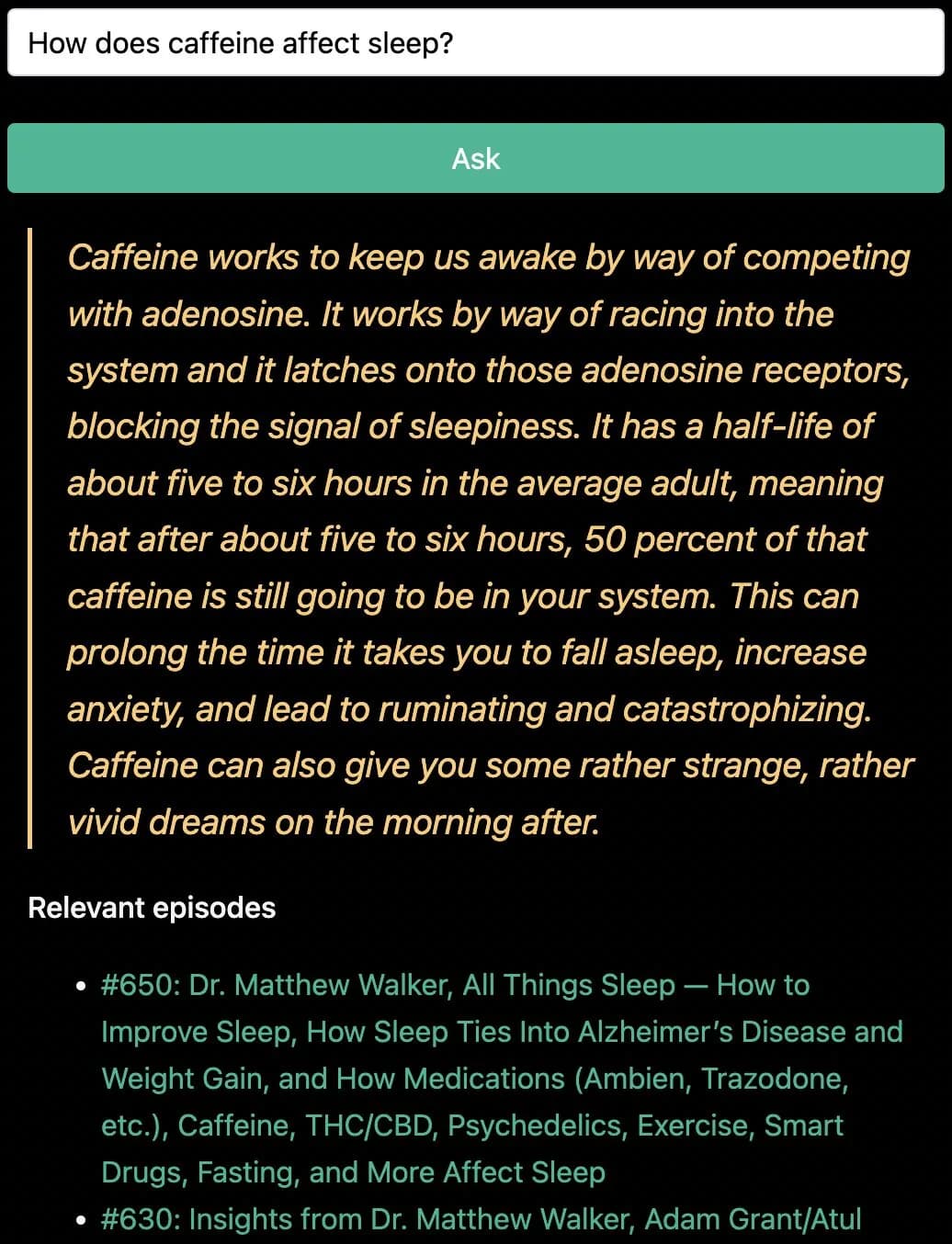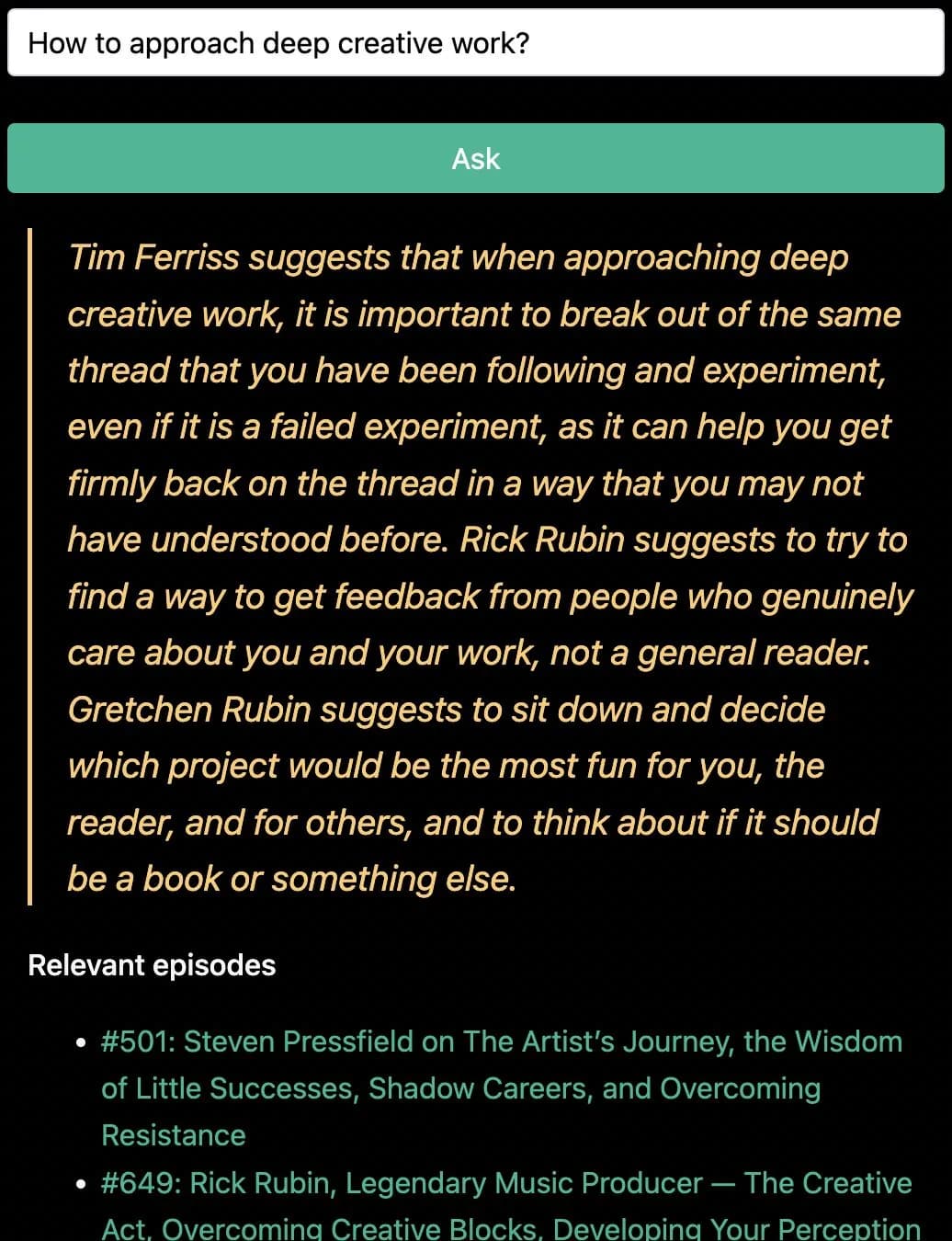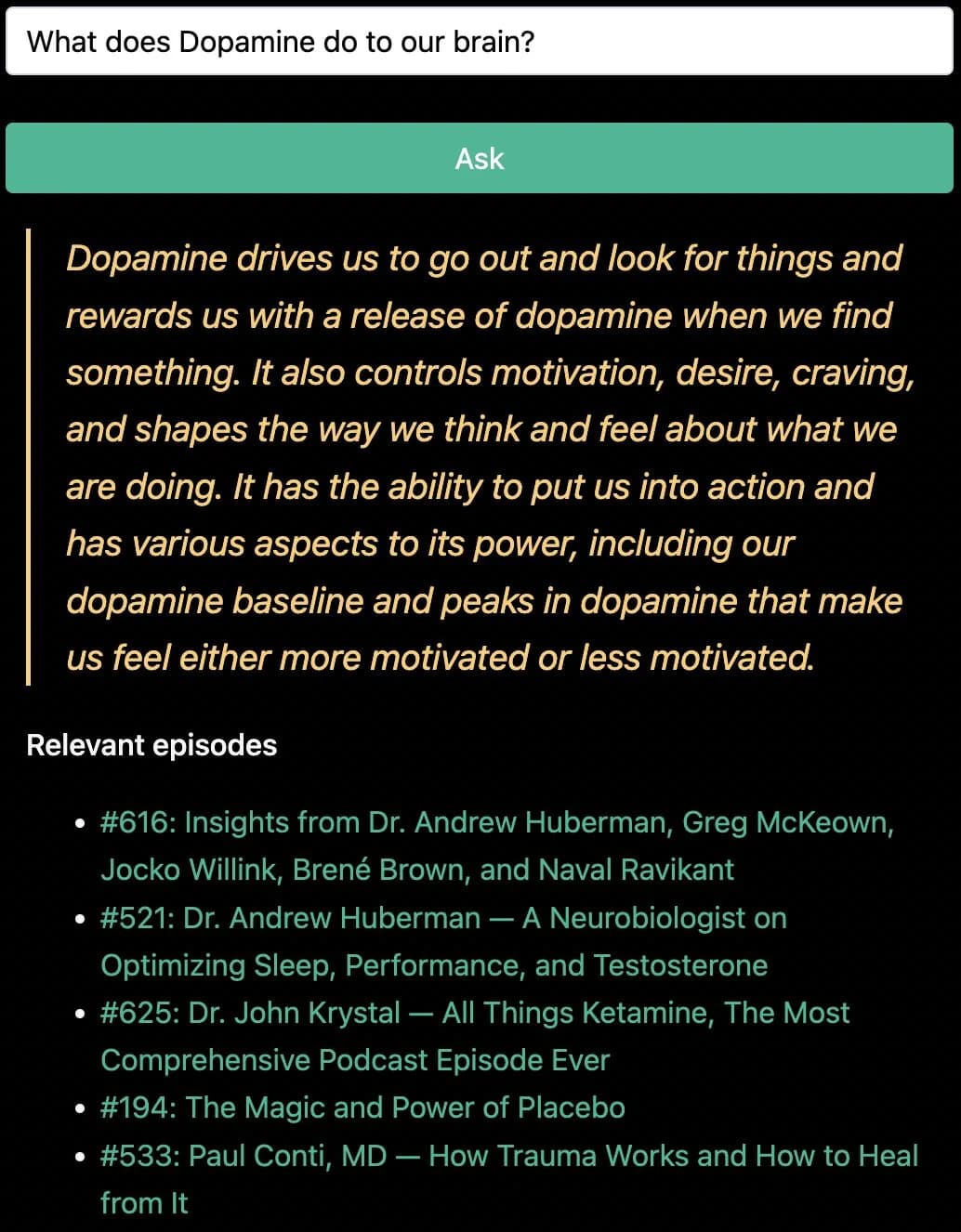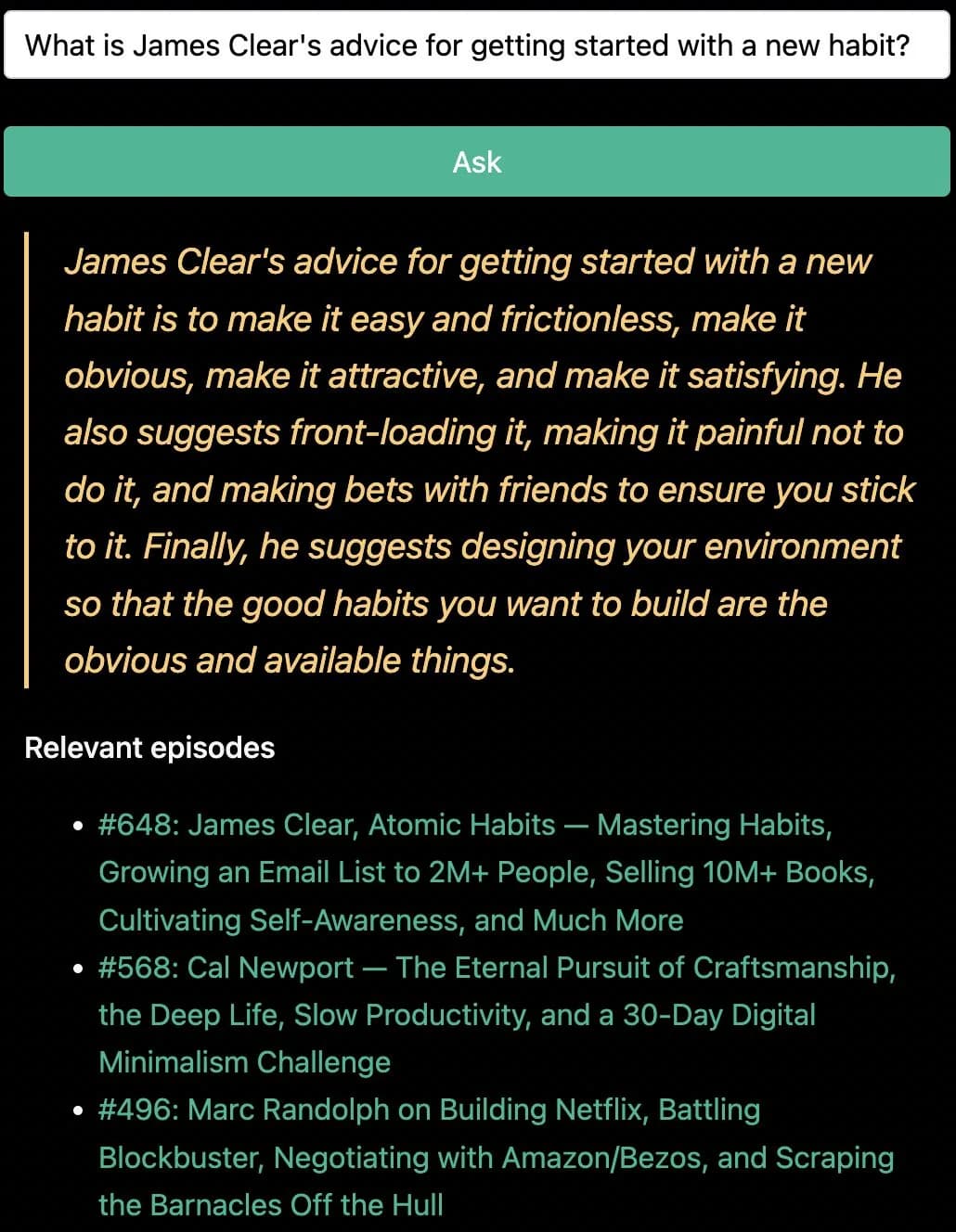Ecosyste.ms: Awesome
An open API service indexing awesome lists of open source software.
https://github.com/nem035/tim.nem.ai
AI chat with Tim Ferriss or any of his past guests
https://github.com/nem035/tim.nem.ai
ai embeddings gpt-3 gpt-4 nextjs openai podcast semantic-search supabase typescript vector-embeddings
Last synced: 15 days ago
JSON representation
AI chat with Tim Ferriss or any of his past guests
- Host: GitHub
- URL: https://github.com/nem035/tim.nem.ai
- Owner: nem035
- Created: 2023-02-12T11:39:28.000Z (over 1 year ago)
- Default Branch: main
- Last Pushed: 2024-08-09T02:57:14.000Z (3 months ago)
- Last Synced: 2024-08-09T03:55:52.373Z (3 months ago)
- Topics: ai, embeddings, gpt-3, gpt-4, nextjs, openai, podcast, semantic-search, supabase, typescript, vector-embeddings
- Language: TypeScript
- Homepage: https://tim.nem.ai
- Size: 52.2 MB
- Stars: 1
- Watchers: 2
- Forks: 1
- Open Issues: 0
-
Metadata Files:
- Readme: README.md
Awesome Lists containing this project
README
# Tim Ferris AI
[Here's a link to try it out](https://tim.nem.ai)
As a way to examine what's possible with OpenAI's [latest embeddings model](https://openai.com/blog/new-and-improved-embedding-model) called `text-embedding-ada-002`, I spent the weekend building a Tim Ferriss AI to answer questions addressed to him or any of his past guests.
We can use it to get human-like answers based on what was said in any episode.
## TLDR;
The site uses a semantic search to find the chunks of text across all episodes that talk about what the question asks. Then it uses a GPT-3 model to generate a coherent answer.
## Examples
See a few examples below on how it works:
| | |
| -------- | ------- |
|||
|||
|||
## Run loop
When you pose a question, the following things happen:
1. question text gets embedded
2. that embedding gets matched to N closest embeddings across all transcript chunks
3. the matched chunks get combined into a context string
4. the context string and the question get combined into a prompt
5. prompt is sent to another AI model to formulate into a coherent answer
6. include a sorted-by-similarity list of episode links from all chunks (since all those episodes talk about what the question asked)
## Code
The loop above translates to the following code:
```js
// question text gets embedded
const embedding = await getEmbedding(question);
// embedding gets matched to N closest embeddings across all transcript chunks
const trascriptChunks = await matchTranscriptChunks(question, embedding);
// matched chunks get combined into a context string
const context = combineChunksIntoContext(trascriptChunks);
// context string and the question get combined into a prompt
const prompt = buildPrompt(context, question);
// prompt is sent to another AI model to formulate into a coherent answer
const answer = await getAnswer(prompt);
// include a sorted-by-similarity list of episode links from all chunks
const sortedEpisodes = await getMatchedEpisodesSortedByRelevance(trascriptChunks);
```
### Setup
I crawled (most) of the episode transcripts, chunked them up into smaller segments of text roughly paragraph-size, and then used the embeddings model to embed each chunk into a 1536-dimensional vector.
The frontend is a Next.js app, the data is stored in Supabase, and the embeddings search is using [pg-vector](https://github.com/pgvector/pgvector).